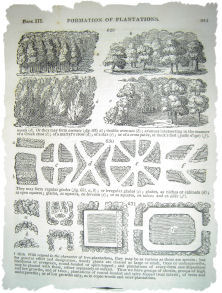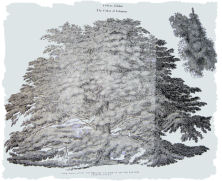
Tree Collecting in the British Enlightenment
![]() timulated by the discoveries and encounters of global travel during the sixteenth and seventeenth centuries, novel specimens were collected by explorers such as John Gerard and John Tradescant for study, edification and pleasure. Henry Compton, Bishop of London, collected and planted hundreds of trees and shrubs, many from the North American colonies in his gardens in the grounds of Fulham Palace during the late seventeenth and early eighteenth centuries.
timulated by the discoveries and encounters of global travel during the sixteenth and seventeenth centuries, novel specimens were collected by explorers such as John Gerard and John Tradescant for study, edification and pleasure. Henry Compton, Bishop of London, collected and planted hundreds of trees and shrubs, many from the North American colonies in his gardens in the grounds of Fulham Palace during the late seventeenth and early eighteenth centuries.
The collecting of trees and shrubs by aristocrats and gentry
was also encouraged by the activities of the Royal Society, the royal
botanic gardens and the Society of Arts.
The quantity of novel specimens impacted upon botany, horticulture and landscape gardening by encouraging the development of taxonomic systems to facilitate identification and cataloguing.
As part of his vision to create a botanical institution of international significance, Joseph Banks and the gardener William Aiton planted hundreds of trees and shrubs at the Royal Botanic Gardens at Kew during the 1770s, mainly from North America, and instigated a system of labelling.
Innovations in British landscape gardening, especially the work of Brown and Repton after the demise of the formal garden valued trees for their aesthetic qualities as much as horticultural economy. Trees were valued by landowners such as the Duke of Marlborough and William Beckford for their aesthetic qualities and became central to the Brownian school of landscape design. Exotic arboreal specimens were also prized like works of art or antiquities as items that could satisfy the aristocratic taste for consumption, display, competition, collecting and learning.

